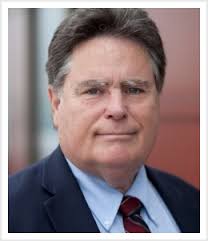Contact Mace News President
Tony Mace tony@macenews.com
to find a customer- and markets-oriented brand of news coverage with a level of individualized service unique to the industry. A market participant told us he believes he has his own White House correspondent as Mace News provides breaking news and/or audio feeds, stories, savvy analysis, photos and headlines delivered how you want them. And more. And this is important because you won’t get it anywhere else. That’s MICRONEWS. We know how important to you are the short advisories on what’s coming up, whether briefings, statements, unexpected changes in schedules and calendars and anything else that piques our interest.
No matter the area being covered, the reporter is always only a telephone call or message away. We check with you frequently to see how we can improve. Have a question, need to be briefed via video or audio-only on a topic’s state of play, keep us on speed dial. See the list of interest areas we cover elsewhere
on this site.
—
You can have two weeks reduced price no-obligation trial for $199. No self-renewing contracts. Suspend, renew coverage at any time. Stay with a topic like trade while it’s hot and suspend coverage or switch coverage areas when it’s not. We serve customers one by one, 24/7.
—
Tony Mace was the top editorial executive for Market News
International for two decades.
Washington Bureau Chief Denny Gulino had the same title at Market News for 18 years.
Similar experience undergirds our service in Ottawa, London, Brussels and in Asia.

President
Mace News

D.C. Bureau Chief
Mace News

Federal Reserve
Mace News

Reporter and expert on the currency market.
Mace News

Reporter and expert on derivatives and fixed income markets.
Mace News

Financial Journalist
Mace News

Reporter, economic and political news.
Japan and Canada
Mace News
–Q1 GDP Annualized 2.0% Drop Vs. Median Forecast of 1.6% Contraction
–Economy Grows 1.2% in Fiscal 2023, Below Official Forecast of 1.6%
By Max Sato
(MaceNews) – Japan’s gross domestic product for the January-March quarter posted its first contraction in two quarters, down 0.5% on quarter, or an annualized 2.0%, as suspended output at Toyota group factories over a safety test scandal triggered a widespread slump beyond the auto industry after the economy narrowly averted a second straight contraction in the final quarter of 2023, Cabinet Office data released Thursdayshowed.
The decline was slightly deeper than the median forecast of a 0.4% drop on quarter (forecasts ranged from 0.8% to 0.2% decreases), or a 1.6% fall annualized (3.3% to 0.7% drops).
The fourth quarter GDP’s slight 0.1% growth on quarter, or an annualized 0.4% gain, was now revised down to be flat in both measures. In October-December, a solid rebound in business investment and a rise in net exports due to a temporary surge in services income (copyright royalties) were offset by declines in consumption and public works as well as a downwardly revised fall in private-sector inventories. The initial estimate for the quarter reported in February was a 0.1% slip, or 0.4% contraction annualized.
From a year earlier, the economy fell 0.2% in January-March for the first drop in three years, as expected, following a 1.2% rise in October-December.
The economy grew a real 1.2% in fiscal 2023, below the official forecast of a 1.6% rise after expanding 1.6% (revised up from 1.5%) in fiscal 2022, which was slightly under the official projection of 1.7%. It followed a 2.8% gain in fiscal 2021 and decreases of 3.9% in fiscal 2020 and 0.8% in fiscal 2019.
Looking ahead, the economy in April-June is expected to show modest growth (about 1.7% annualized) as auto production resumed in March but consumer spending remains sluggish amid elevated costs for food and other necessities. Both households and businesses are concerned that the weakness of the yen, whose value has hit 34-year lows against the dollar, will cause a resumed spike in import costs at a time when the prices for some commodities are rising.
Domestic Demand Dips, Consumption Drops Faster Than Expected
Domestic demand trimmed the first quarter GDP by 0.2 percentage point, weaker than the median forecast of minus 0.1 point (forecasts ranged from a negative 0.3 point to a positive 0.5 point). It lowered fourth quarter growth by 0.2 point (revised down from a negative 0.1 point). A larger-than-expected rebound in public works spending was more than offset by a pullback in business investment and weaker-than-expected consumer spending.
Private consumption, which accounts for about 55% of GDP, fell 0.7% for a fourth straight quarterly decline, coming in much weaker than the median projection of a 0.2% fall (forecasts ranged from a 0.5% drop to a 0.4% gain) and following a 0.4% drop (revised down from a 0.3% dip) in the fourth quarter.
Consumption pushed down the first quarter GDP by 0.4 percentage point after making a negative 0.2-point contribution (revised down from minus 0.1 point) to the total domestic output in the previous quarter.
Capex Slips After Sharp Rebound
Business investment in equipment slumped 0.8% on quarter in January-March, firmer than the median forecast of a 1.2% drop (forecasts ranged from 2.0% to 0.2% drops). It was in payback for a sharp 1.8% rebound (revised down from a 2.0% jump) in October-December, the first rise in three quarters that was backed by continued solid growth in sales and profits.
Capex made a negative 0.4-point contribution to the first quarter GDP after providing a positive 0.3-point contribution the previous quarter.
Firms have been generally cautious about implementing their solid plans amid elevated costs and uncertainty over global growth, although capital investment is generally supported by demand for automation amid labor shortages as well as government-led digital transformation and emission control.
Net Exports Show Pullback
Japanese exports of goods and services posted their first quarterly decline in four quarters in the January-March quarter GDP, down 5.0%, after rising 2.8% in October-December. Imports also fell 3.4% after rising 1.8% in the previous quarter.
The number of visitors from other countries has recovered to pre-Covid levels and their spending is counted as Japanese exports of services. By contrast, exports of goods have been sluggish amid a weak tone in the European economy and despite signs of a pickup in China.
Private Inventories Support GDP, Public Works Spending Rebounds
Public works spending posted its first quarterly rise in three quarters, up 3.1% in January-March, backed by the stimulative effects of the fiscal 2023 budget, after falling 0.2% (revised up from a 0.8% drop) in October-December. It was much stronger than the median forecast of a 1.8% rise (forecasts ranged from 1.0% to 3.0% gains).
Public investment made a positive 0.2-point contribution to the first quarter GDP after lowering the total output by a slightly negative 0.0 point (revised up from minus 0.1 point) in the previous quarter.
Price Pressures Continue Easing Both on Year, Quarter
The unadjusted deflator rose 3.6% on year in January-March after rising 3.9% in October-December. The slower increase was due to a 2.8% rise in the import deflator following a 3.7% fall in the previous quarter. The pace of increase in the domestic demand deflator accelerated to 2.6% from 2.1%.
The seasonally adjusted deflator rose 0.6% on quarter after rising 0.7% in the third quarter, with the domestic demand deflator increasing 0.7% after rising 0.5%. The import deflator rose 1.5% after rising 2.4% in the prior quarter.
Consumer inflation continued easing in January but not so fast as expected because downward pressures from falling subsided energy costs, smaller processed food markups and hotel fee gains were partly offset by a surge in overseas package tour prices due to a statistical distortion.
The Cabinet Office said this distortion in the CPI data was adjusted when the GDP deflator was calculated for the January-March quarter.
The prices for overseas package tours jumped 62.9% on year in January, pushing up the CPI by 0.15 percentage point. Effective January this year, the Ministry of Internal Affairs and Communication resumed reflecting pricing data collected through its web scraping method for this category, which had been suspected since January 2021. This means the January 2024 data reflected three years of price changes. The pandemic prevented many Japanese from traveling freely to other countries for more than three years. After the government widely lifted its Covid public health restrictions in May 2023, the ministry resumed scraping prices for overseas trips packaged by Japanese travel agencies but waited until January 2024 to ensure data collection was smooth.
–ISM Manufacturers Predict Prices Paid to Rise 1.9% in 2024; Services Firms See Stickier 3.2%
–ISM’s Fiore: No Firms See Urgent Need to Expand Capacity When Demand Forecast Is Still Weak
–ISM’s Nieves: Firms Wary of Spending on Capex, Labor amid Uncertainties Over US Election, Geopolitical Risks, Inflation
By Max Sato
(MaceNews) – The U.S. economy is expected to continue expanding “softly” for the rest of 2024 as both manufacturers and services providers project lower revenue growth, and thus slower capital spending, amid sticky inflation and lingering geopolitical risks, according to the twice-annual survey by the Institute for Supply Management released Wednesday.
Recent financial market predictions of a delayed interest rate cut by the Federal Reserve until later this year didn’t seem to have a big impact on the survey results because heightened expectations for an earlier and more frequent policy easing had not emerged when the previous semiannual survey was conducted in November to early December.
Positive for supply managers and Fed policymakers is that manufacturing companies in the ISM’s semiannual survey expect that the prices they pay will increase by 1.9% in 2024, slower than the 3.3% rise they forecast in December and in line with the Fed’s 2% inflation target. By contrast, services firms forecast a 3.2% climb in the prices paid this year, easing only slightly from the 3.4% predicted late last year.
“With 12 manufacturing industries expecting revenue growth in 2024 and nine industries expecting employment growth in 2024, panelists forecast that recovery will continue the rest of the year, albeit somewhat softer than originally expected,” Timothy Fiore, chair of the ISM Manufacturing Business Survey Committee, said in a statement.
Sentiment in each industry was generally consistent with the ISM sector report for April and the semiannual economic forecast conducted in December, he said.
“The services sector will continue to grow for the rest of 2024,” Anthony Nieves, chair of the ISM Services Business Survey Committee, said. “Thirteen industries forecast increased revenues, down from the 16 industries that predicted increases in December 2023.”
Fiore said there is not much difference in Fed rate cut expectations between now and about five months ago (Dec. 15, 2023), when the ISM’s last semiannual report was issued. At the time, he called remarks by Fed Chairman Jerome Powell made earlier that week a “Christmas gift” as they suggested that the U.S. central bank appeared to be done with rate hikes and that the economy might be able to avoid recession.
Asked about the lack of rate relief support from the Fed, Fiore told reporters that firms didn’t have the benefit of heightened rate cut expectations during the previous semiannual survey period, either. Nieves said it is still uncertain whether the Fed will lower its policy rate in September as some market participants expect but noted that at least the Fed didn’t hike rates in the past six months.
The panel of purchasing and supply executives in the manufacturing expects a 2.1% net increase on average in overall revenues for 2024, much slower than the 5.6% rise projected in the December but higher than the 0.9% increase reported for 2023.
Fiore noted that the manufacturing sector’s revenue growth forecast at 2.1% is similar to their prices paid prediction at 1.9% for this year, which means much of the revenue will reflect a pass-through of higher costs during a “slow growth period.” On the upside, he told reporters, the U.S. earnings season has seen good results.
Services survey respondents forecast that business revenues for 2024 will grow by an average of 2.9%, down sharply from the 6.9% increase projected in December and lower than the 4.2% increase reported for 2023.
Manufacturers expect capital expenditures to increase a modest 1.0% in 2024, down sharply from the 11.9% surge forecast in December. Surveyed firms are being “conservative” about their capex plans, Fiore said, adding, “Nobody is seeing the urgent need to go ahead and expand their capacity when the demand forecast is still weak.”
Services providers also expect a slower increase of 1.4% in capex for 2024, compared to a 2.9% predicted late last year. The services sector is being “wary” about their spending on equipment and labor, Nieves said. “There are so many variables involved right now as we are going through this election period as well as geopolitical concerns, and inflation again is paramount,” he said.
Companies in the manufacturing sector are currently operating at 82.8% of normal capacity, down slightly from 83.0% in the December survey but up from 82.0% in the May 2023 report. Services firms are operating at 88.6% of normal capacity, up from 86.5% reported in December but down from 91.0% seen a year earlier.
Respondents in the manufacturing sector reported a net average increase in prices paid was 1.6% for the first four months of 2024, below the 3.2% rise predicted in December. Services respondents said purchases during the same period cost an average of 2.3% more than at the end of 2023, also down from the 3.7% increase forecast in the previous report.
Employment growth for 2024 predicted by ISM manufacturers is a slight 0.3% increase, revised down from a 2.0% rise forecast in December. Services providers expect a 0.8% rise, unchanged from their December projection. Nieves repeated his recent assessment that employment conditions for the services sector remain “a mixed bag” as some firms are still struggling to fill vacancies.
The ISM’s latest monthly survey showed that U.S. manufacturing activity slipped back into slight contraction in April (the key index at 49.2) after posting the first expansion in 17 months in March (50.3), hit by a “disappointing” decline in new orders and a renewed surge in raw materials costs, but employment conditions continued improving toward growth.
The ISM’s other monthly report also showed business activity in the U.S. services sector unexpectedly slipped back into slight contraction in April after 15 months of growth, hit by sluggish demand and still mixed but cooling employment amid lingering concerns over inflation and geopolitical risks. The ISM sector index slumped 2.0 percentage points to a 16-month low of 49.4 in April after falling 1.2 points to 51.4 in March.
– First Quarter Inflation Data Hurt His ‘Confidence” that Disinflation Will Resume
– Will Take Longer to Become Confident Inflation Is Coming Down Over Time
By Steven K. Beckner
(MaceNews) – Federal Reserve Chair Jerome Powell did not rule out raising short-term interest rates to bring inflation down to the Fed’s 2% target, but said it is more likely the Fed will just have to keep monetary policy in its current “restrictive” stance for longer than once projected.
Powell boasted of the reduction of inflation achieved in the second half of last year and said he expects that disinflation trend to resume but admitted that first quarter inflation data had hurt his confidence in that outcome.
He described a worse than expected April producer price index report as “quite mixed” in remarks at the annual meeting of the Foreign Bankers’ Association.
Powell essentially repeated what he said after the May 1 meeting of the Fed’s policymaking Federal Open Market Committee, when the FOMC left the federal funds rate in a 5.25% to 5.50% target range for the sixth straight meeting and said it would keep that key money market rate at that level “until it has gained greater confidence that inflation is moving sustainably toward 2%.”
Powell again described monetary policy as “restrictive,” but said it remains to be seen whether it is restrictive enough.
“By any measure policy is restrictive; the question is whether it is sufficiently restrictive,” he said.
Asked whether the FOMC might need to raise the funds rate, Powell replied that a rate hike is “a small possibility,” but repeated what he said in his May 1 press conference — that “it is not likely the next move we make would be a rate hike.”
More likely is that the FOMC will “hold policy rate where it is,” he added.
Powell, who was making a joint appearance with De Nederlandsche Bank President Klaas Knot, again emphasized that the Fed is committed to getting inflation down to 2% by keeping policy “restrictive.”
To achieve that goal, he said, “It’s probably a matter of just staying at that stance for longer.”
“Ultimately we will do what we need to do to get inflation down to 2%,” Powell asserted.
After making “real progress on inflation” last year, he said “the first quarter was notable for lack of further progress.”
The worse than expected first quarter data, which showed inflation averaging more than 3 ½% at an annual rate, showed that the FOMC must “be patient and let restrictive policy do its work,” he said.
Powell said he still expects inflation “to move back down” to a pace “more like (the second half of ) last year,” but said “my confidence in that is not as high as it was. We’re just going to have to see how it plays out.”
“At the present time policy is restrictive, and it (probably will) take longer for us to become confident that inflation is coming down over time,” he reiterated.
Earlier, the Labor Department reported that its producer price index rose a worse than expected 0.5% in April, following a downwardly revised 0.1% March rise.
Powell described the PPI report as “quite mixed.” Pointing to revisions to prior months, he called it “not hot, but mixed.”
Regarding the first quarter readings on the consumer price index and the price index for personal consumption expenditures (PCE), Powell said “I did not expect a smooth road,” but said the first quarter data were more “bumpy” than he had expected and undermined his confidence in the inflation outlook.
The Fed chief said much of the progress against inflation last year reflected recovery from pandemic supply disruptions. He said there could be some further disinflationary benefits from the supply side, but said the Fed is now predominantly hoping that its “restrictive” monetary policy will quell demand for goods and services.
“Restrictive monetary policy cools the economy and makes room for the supply side to heal,” he said, adding that restrictive policy “lowers demand and ultimately cools inflation.”
He pointed to housing prices – “a bit of a puzzle” — as the main culprit for keeping inflation elevated, but said they should come down with a lag as rents grow less rapidly. He noted that service prices have also been slower to come down.
Powell said that not all of those three components (goods, services and housing) need to come down to 2%, so long as the three average 2%.
Meanwhile, he said the labor market remains “very strong,” but he said it is “gradually coming back into balance” after earlier being “overheated.”
Powell downplayed concerns about the putative “neutral rate” or the so-called r* — the economy’s real equilibrium short-term interest rate.”
“The r * debate runs in the background, but it’s a longer run concept,” he said. Rather, “we think about the effect of the things we’re doing on financial conditions and the economy — how they’re affecting the economy and why.”
Asked about record federal budget deficits and the mounting national debt, Powell said “U.S. fiscal policy is on an unsustainable path.”
–Real Household Income Posts 18th Straight Y/Y Drop but Improves from February on Higher Wage Hikes By Max Sato (MaceNews) – Japan’s real household spending
WASHINGTON (MaceNews) – The following are Thursday’s schedules for the White House, Treasury, USTR, the State Department and Capitol Hill as well as U.S. economic data
WASHINGTON (MaceNews) – The following are Wednesday’s schedules for the White House, Treasury, USTR, the State Department and Capitol Hill as well as U.S. economic data
WASHINGTON (MaceNews) – The following are Tuesday’s schedules for the White House, Treasury, USTR, the State Department and Capitol Hill as well as U.S. economic data
WASHINGTON (MaceNews) – The following are Monday’s schedules for the White House, Treasury, USTR, the State Department and Capitol Hill as well as U.S. economic data
–Rightwing PM Replays Berlusconi Script with Run for Strasbourg Seat By Silvia Marchetti ROME (MaceNews) – Italy’s premier Giorgia Meloni has announced her candidacy in
US service sector contracts
– Powell: Will Take Longer To Be Confident Inflation Headed to 2% – Rates Could Go Higher If FOMC Persuaded Not ‘Sufficiently Restrictive” – QT
Contact Mace News President
Tony Mace tony@macenews.com
to find a customer- and markets-oriented brand of news coverage with a level of individualized service unique to the industry. A market participant told us he believes he has his own White House correspondent as Mace News provides breaking news and/or audio feeds, stories, savvy analysis, photos and headlines delivered how you want them. And more. And this is important because you won’t get it anywhere else. That’s MICRONEWS. We know how important to you are the short advisories on what’s coming up, whether briefings, statements, unexpected changes in schedules and calendars and anything else that piques our interest.
No matter the area being covered, the reporter is always only a telephone call or message away. We check with you frequently to see how we can improve. Have a question, need to be briefed via video or audio-only on a topic’s state of play, keep us on speed dial. See the list of interest areas we cover elsewhere
on this site.
—
You can have two weeks reduced price no-obligation trial for $199. No self-renewing contracts. Suspend, renew coverage at any time. Stay with a topic like trade while its hot and suspend coverage or switch coverage areas when it’s not. We serve customers one by one 24/7.
—
Tony Mace was the top editorial executive for Market News International for two decades.
Washington Bureau Chief Denny Gulino had the same title at Market News for 18 years.
Similar experience undergirds our service in Ottawa, London, Brussels and in Asia.